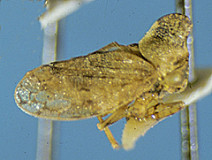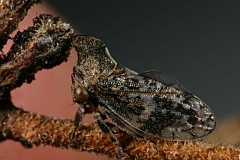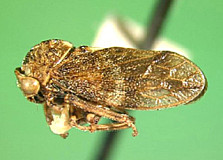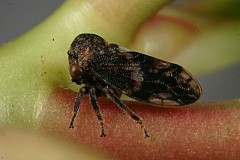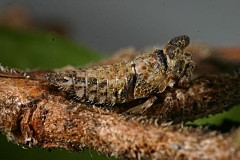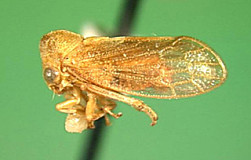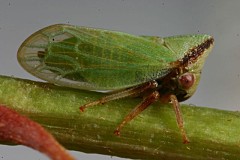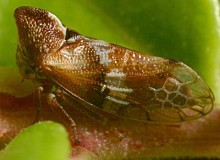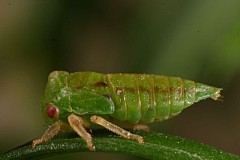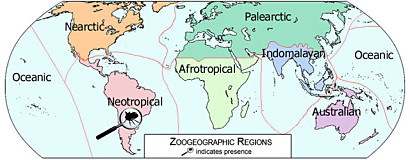Remes-Lenicov 1975a
Linnavuori and DeLong 1978a
Deitz and Dietrich 1993a
Dietrich and Deitz 1993a
McKamey 1998a
Dietrich 2005a
Animalia → Arthropoda → Insecta → Pterygota → Hemiptera → Auchenorrhyncha → Cicadomorpha → Membracoidea
Melizoderidae Deitz and Dietrich, 1993
Selected references
Overview
The smallest family of treehoppers is Melizoderidae, known only from Chile and Argentina. This group includes only two genera—Melizoderes and Llanquihuea—both belonging to the subfamily Melizoderinae and tribe Melizoderini. The monophyly of this family is supported by a unique derivation in the nymphs: tergum IX completely conceals the anal orifice dorsally (Deitz and Dietrich 1993a). Dietrich (2005a) included this family in key to the families of Cicadomorpha.
Taxon images
Melizoderidae
Distribution
Diagnostic characters
Frontoclypeus strongly convex, produced anteroventrally. Distance from eye to base of forewing less than half eye width. Pronotum weakly to strongly produced anterodorsally, not extending posteriorly over scutellum. Scutellum fully visible, convex basally, keeled posteriorly, not elongate. Forewings with veins R, M and Cu diverging from one point or M briefly united with R or Cu. Prothoracic trochanter and femur not fused. Male abdominal segment IX without lateral lobes and lateral plates. Female pygofer not strongly produced posteroventrally. Nymph with abdominal segment IX with ventromedial lobes free (Melizoderes) or fused (Llanquihea), anal opening ventral.
Discussion
This monotypic family includes only the nominotypical subfamily Melizoderinae and tribe Melizoderini.
Taxonomic constituents
Melizoderinae Deitz and Dietrich, 1993 Deitz and Dietrich, 1993
Prepared by
Lewis L. Deitz and Christopher H. Dietrich, 16 January 2023.


